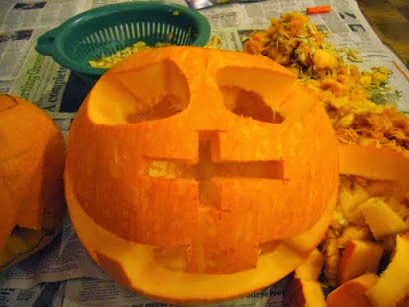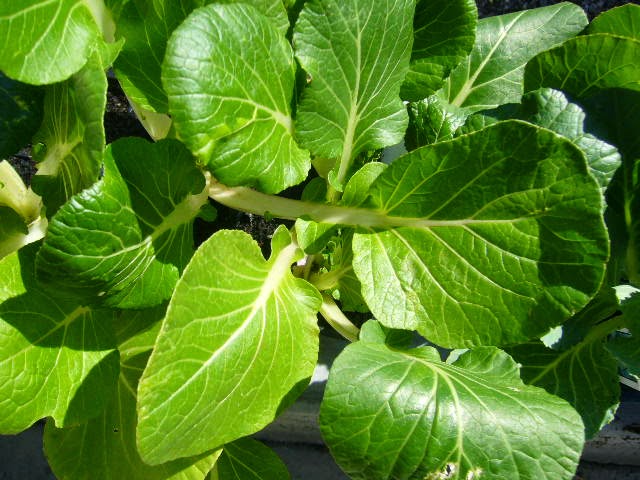 |
| Spooktacular Pumpkins! |
Happy Halloween! I have a small confession to make. My name is Bill. I am 51 years old. And I'm really just a child at heart. I mean, really. While other 51 year old men are captains of industry or finding a cure for one disease or another -- I'm at home carving pumpkins. I'm hanging orange colored pumpkin lights outside. I'm preparing a scary music CD for the kids on Halloween night.
What sort of 51 year old man does this? You're right -- he doesn't. But 12-year olds do. I'm 12. Nice to meet you.
 |
| What in the World? A Smooth Pumpkin? |
This isn't the first time we've grown pumpkins in the Bird Back 40. This isn't even our best crop of pumpkins. But this year's harvest does feature something special: a smooth skinned sporty looking Jack O' Lantern. What kind of pumpkin is it? Good question! I don't remember planting any seeds for a smooth-skinned variety to be completely honest with you.
The wife that is Venus and I normally plant two types of pumpkins. The small, sugary types that are reserved for all things pumpkin pie, pumpkin cookies, pumpkin breads and even pumpkin soups! We also plant seeds for a second, larger variety that will be used for carving purposes on All Hallowed's Eve.
 |
| 2014 Partial Pumpkin Harvest: Bird Back 40 |
Yet -- for some strange reason -- the test bed gardening plot that we normally reserve for corn and all things pumpkins and other squash yielded three varieties of pumpkins. We did get a smattering of large, ribbed pumpkins sure enough. And then -- the test bed produced this orange smooth skinned wonder that is also streaked with shades of yellow. We've never seen anything like it before. We've never grown anything like it before. And -- strangely enough -- the garden produced only one of this variety.
Are ghostly spirits at work in the Bird Back 40? Quite possibly! But these are the good spirits who kept the nasty bugs away -- including the pesky squash bugs that have played havoc with past plantings. We saw only two this spring. Venus managed to bring them inside the house with some tomatoes she had recently harvested. We dispatched them rather quickly and haven't seen a trace of them or any brethren since. I didn't get around to spraying for them this year -- my back was in no shape for that kind of work. As it turns out -- bug spray wasn't needed. The squash bugs stayed away.
 |
| Not Quite Ready for Pumpkin Prime Time |
I get a strange satisfaction over NOT paying for pumpkins to carve for Halloween. The one season where squash bugs invaded and destroyed most of our pumpkin crop, the wife and I were forced to head out to a pumpkin farm on a lonely Rio Linda street corner, where we shelled out $25 for three pumpkins.
I hung my head in shame that Halloween. Shameful! And, never again!
Last year was a record setting Halloween in terms of child visits to our GarageMahal. It brought back memories of my childhood, where THOUSANDS of brightly costumed Modesto children jammed
neighborhood streets, knocking on doors and taking delight in all the Halloween decorations that had been placed outside. It seemed that every home sported some sort of decoration back in the day.
The neighbors who served up our Halloween treats were fairly inventive themselves. If they weren't forcing us through some cardboard box, haunted house deathtrap in the backyard, they were doing something else to give us a proper scare. I remember one such gentleman (a father no less) who lived at a Codding Ave. house that featured a long hallway before it reached the front door.
On this particular Halloween night when I pounded on his screen door (door bells were reserved for rich folks back in the day), there was no expected answer. The light in the house was low but I could make out a figure in a red-stained apron slowly coming down the hallway. As he slowly emerged into the light, I could hear the familiar cling-clang sound that is produced while sharpening razor-sharp knives. Sure enough, this man walking toward me had two butcher knives in his hand, and there was no doubt what he had in mind as he sharpened both utensils while slowly heading in my direction.
I did what every eight or nine year old boy would do in this situation. I did my best lear jet routine and ran like the wind! I could hear him laughing as I zoomed across his driveway, begging me to come back. And I would carefully and gingerly accept his candy offerings, while keeping a sharp eye on those sharp knives.
I know what you're thinking. "Big deal -- so he pulled a Jason routine from Friday The 13th." And you would be right. But you've got to remember something: This was 1971 in Modesto. There was no Jason. There was no Friday the 13th. There was no Freddie or Halloween slasher movie to pull inspiration from. The cult slasher movies were years away from release. Heck, the scariest thing we had back in the day was Bob Wilkins and his "Creature Features" where he aired chilling horror films such as "Mars Needs Women."
 |
| Grinning Jack O' Lantern |
The neighbors who served up our Halloween treats were fairly inventive themselves. If they weren't forcing us through some cardboard box, haunted house deathtrap in the backyard, they were doing something else to give us a proper scare. I remember one such gentleman (a father no less) who lived at a Codding Ave. house that featured a long hallway before it reached the front door.
 |
| Bird Back 40 Pumpkin (Weed) Patch |
I did what every eight or nine year old boy would do in this situation. I did my best lear jet routine and ran like the wind! I could hear him laughing as I zoomed across his driveway, begging me to come back. And I would carefully and gingerly accept his candy offerings, while keeping a sharp eye on those sharp knives.
 |
| Home Grown Pumpkins |
Not every neighbor took part in the fun. Some didn't do anything at all. But those who offered us no Halloween inspiration could expect to be properly egged. But not by me. Perish the thought.

























